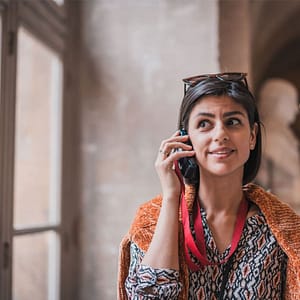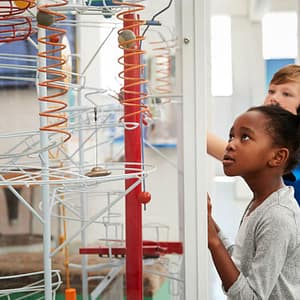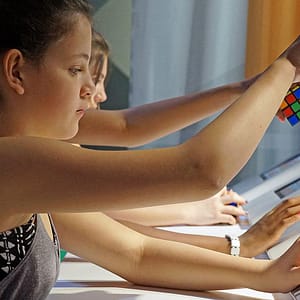How Translations Can Promote Diversity and Inclusion at Museums
In recent years, more and more museums have made diversity, equity, accessibility, and inclusion a priority. Institutions are striving to engage multicultural audiences and strengthen ties to their local communities. They are making efforts to reflect diverse experiences and perspectives, and create spaces that are welcoming to marginalized individuals. Many museums now mandate that their offerings be made accessible to a range of audiences.
It is widely recognized that translation helps achieve these objectives. However, museums everywhere feel the challenges of insufficient budget or staff. How should museums prioritize the development of multilingual materials? With limited resources, where is the best place to begin?
Translating and Typesetting Museum Maps and Visitor Guides
Bi- or multilingual maps and visitor guides are a logical first step. Translating these resources comes with a relatively low price tag, and improves the visitor experience for tourists and local residents alike.
To properly develop maps in different languages, it is important to have them professionally translated and typeset. The process is surprisingly straightforward. A language services provider will work directly from an InDesign file, extract the text for translation and editing, then return the text to InDesign for typesetting. After a final round of proofreading, the print-ready files are ready. Following this process ensures that the translated text fits legibly into the layout and map graphics.
Some museums opt to translate maps and visitor guides into a single language, while others translate guides into multiple languages. If the maps include programming details, translations are often done sporadically or seasonally. The number of languages can be dictated by budget as well as the demographics of local residents and out-of-town visitors. Visitor services departments can often be of help identifying which languages would support these individuals.
Translating Special Programs and Events
The translation of programming materials is another cost-effective strategy that can help a museum strengthen its base of local visitors. A museum may want to consider both the subject matter as well as the local demographics in deciding whether to create bi- or multilingual materials for community-minded programming.
A seasonal festival with a variety of activities could benefit from a translated program that details the times and locations of events. On the other hand, an artist talk that appeals to a specific demographic might benefit from translated marketing materials or social media. For example, when the Denver Botanic Garden holds its annual Day of the Dead festival, they translate the signage and entertainment/activity schedule into Spanish.
Translating Wall Text and Exhibit Labels
A slightly more robust approach to language accessibility is the translation of exhibition didactics and/or audio guides. Both have become near-standard elements in helping visitors better understand and engage with exhibits. Institutions differ in their approaches, with some opting to translate permanent exhibitions and others focusing on special exhibits.
The decision to translate permanent collection labels is often driven by local demographics. The Dallas Museum of Art, the San Diego Museum of Art, the Phoenix Art Museum, and the Blanton Museum of Art at the University of Texas are all located amidst large Spanish-speaking communities. By translating their permanent exhibit labels into Spanish, these institutions make their offerings accessible to local residents.
Other museums instead opt to translate special exhibits in cases where a translation would complement the subject matter, or when the subject matter appeals to a specific demographic. When SFMOMA launched its recent exhibition, Art and China After 1989: Theater of the World, the museum translated the exhibition didactics into Chinese.
Multilingual Audio Tours
Along with exhibition didactics, audio guides help visitors interact with exhibits in the language of their choice, independently, at their own pace. Audio tour translation is flexible and can be scalable. As with exhibit labels, some museums will start by translating audio guides for a key selection of works within their permanent collection. Once translated, a recording can be expanded into specialized variations, such as tours geared toward kids and families. In addition to benefitting foreign language speakers, audio tours make exhibits accessible to individuals who are visually impaired or hard of hearing—via headsets or printed transcripts of the tours.
New York’s Metropolitan Museum of Art has a robust audio guide with more than 3,000 recordings, currently offered in English along with nine other languages. In 2015, the museum conducted a visitor survey to better understand the impact of this service.1 The evaluation found that the audio guides were viewed positively by visitors. However, many foreign-language users felt “underserved” because, at that time, the majority of the audio guide content was only available in English. This feedback prompted the museum to expand its foreign language offerings and translate 300 audio stops into the nine languages currently offered. The museum relied on data from their foreign-language analytics to strategically determine which stops to translate and when.
More Bang for Your Buck
While many museums opt to either translate exhibition labels or audio tours, it is not difficult to do both in combination. With proper planning, the translated text can be used for both exhibit labels and audio stops. A translation company can arrange for the audio tour production—maximizing the value of the translations.
Differentiators
By translating the materials above, an institution can help non-English-speakers engage with its exhibits in more meaningful ways. But many go even further, translating educational programming, websites, apps, publications, and multimedia components. Below are a few ways museums use translation services to really set themselves apart from the crowd.
Translating Educational Materials
Promoting education is central to the mission of many museums. Some museums are increasing the accessibility of their educational programming by translating course components and activities. A few examples include:
- The California Academy of Sciences developed the Science Action Club to provide hands-on STEM activities to expand access to science and nature education. In addition to the English activity kit, the academy offers an English-Spanish bilingual version.
- The online course for teachers, Teaching Critical Thinking through Art with the National Gallery of Art, is closed-captioned in Spanish, French, and Chinese. Throughout the run of the course so far, learners from 146 different countries have participated. To increase its support of diverse learners, the museum is rolling out supporting resources in all three languages.
Websites and Apps
A multilingual website is another way a museum can differentiate itself. Translating a website should not be intimidating—as with other materials, the approach is scalable. A museum may opt to translate only certain pages, or information that is relevant to a special exhibit. The Met, for example, has not translated its entire website, but the pages that provide visitor information are available in 11 languages.
Bi- or multilingual apps are another way many museums are enhancing their translation strategies. Apps now combine text with audio, video, and even utilize location-based mapping to give visitors high-quality, easily accessible content in the language of their choice. Apps also provide a means through which to increase the reach of special events through translated push notifications, digital ticketing, or timed reservations.
A Comprehensive Approach to Museum Audience Engagement
There are, of course, some museums that take a comprehensive approach, combining different translated elements to create truly multilingual experiences. One example is SFMOMA. After its three-year-long expansion project, the museum translated both its website and location-based audio app into five languages to appeal to out-of-town visitors, as well as members of the local community. The museum also offers visitor guides in the same five languages, Spanish, Chinese, French, Japanese, and German, which are translated seasonally to incorporate special exhibits or updated information.
A great example of an institution that took a comprehensive approach to a special exhibit is the Brooklyn Museum. For their 2019 show Frida Kahlo: Appearances Can Be Deceiving, the museum translated wall text, along with ticketing pages, building signage, floor plans, and even quotes from the artist on the restroom mirrors.
During the show, a study was conducted to analyze the impact of the museum’s decision to translate.2 Results found that “Visitors responded positively to the inclusion of Spanish language materials, particularly the exhibition labels, whether or not they used them personally, and indicated that continued inclusion of bilingual materials would make them more likely to make a return visit to the museum.”
Creating Meaningful, Memorable Experiences
Implementing translations in cultural institutions does not need to be overwhelming. Doing so can be accomplished successfully even when resources are limited. Rolled out in stages, translated materials can help museums foster inclusive environments, strengthen relationships with local communities, and reach a broad spectrum of visitors.
 Named to the 2023 Inc. 5000 list of fastest-growing companies and ranked among the world’s top 100 language service providers by CSA Research
Named to the 2023 Inc. 5000 list of fastest-growing companies and ranked among the world’s top 100 language service providers by CSA Research

